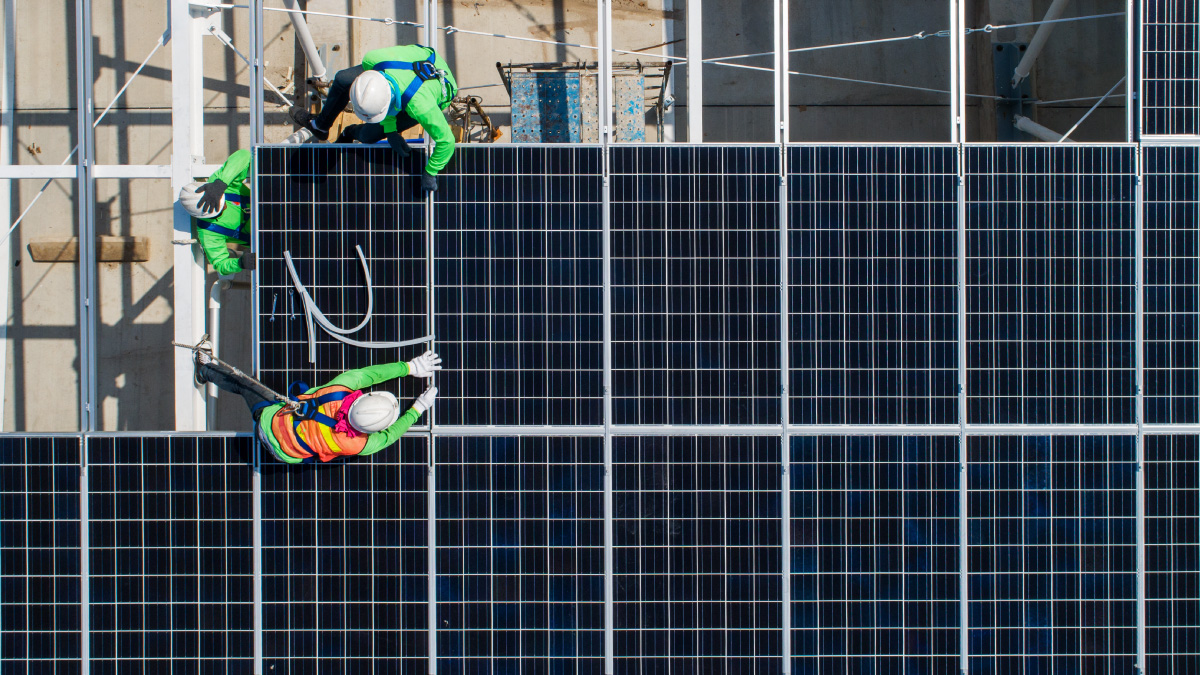Energy grids are a critical component of a net-zero future. But transforming them will not be easy.
Nevertheless, there is tremendous potential for highly efficient, resilient grids that bring clean energy to even the most underserved regions of the world. If, that is, we combine the innovation, policies, and public/private sector collaboration that will make it happen.
This was the subject of “Transforming Grids Globally: The Role of Technology, Digitization, and Collaboration on the Road to Renewable Expansion,” a Cisco-hosted Climate Week NYC panel discussion.
The wide-ranging forum featured Mary de Wysocki, senior vice president and chief sustainability officer for Cisco; Gu Yoon Chung, head of business strategy, and partnership and growth unit officer for Gridspertise; and David Nicholson, chief climate officer for Mercy Corps. The session was moderated by Priya Barua, director of market and policy innovation for the Clean Energy Buyers Association.
Barua began by setting out a few of the challenges facing grid transformation, including the added complexity that arises from decentralized, distributed energy sources like solar or wind.
“Climate change is making extreme temperatures and severe weather events more common,” she said, “putting an increasing strain on existing infrastructure and increasing the need for a reliable and resilient grid. Today’s grids are also not adequately equipped to meet more distributed and variable energy sources or growing electricity demand.”
Chung and de Wysocki expanded on the theme of grid complexity — and the digital innovations that can enable more seamless, efficient, and integrated solutions.
“We need to actually understand what’s going on across the grid,” explained Chung. “That means we need to digitalize the grid so that we can apply sensors. We need to automate a lot of the things that happen on the substation. And now increasingly we need to add intelligence to the grid now that we’re adding all kinds of sophisticated devices, electric-vehicle charging stations, etc. The keywords are digitalization, automation, and intelligence.”
De Wysocki highlighted Cisco’s role in supporting organizations through this transition — and doing it before climate change becomes irreversible.
“The only way that we’re going to mitigate the worst impact is to accelerate the transition to clean energy,” she stressed. “To do that, we need a smart, secure, connected modern grid. And the digital technologies we bring to energy companies or utility providers, can help these organizations accelerate their capabilities through the transition.”
An energy transition that’s innovative, effective, and inclusive
A longtime Cisco partner, Mercy Corps brings essential aid and connectivity to developing regions, refugee camps, and crisis zones around the world. So, Nicholson shared some strong thoughts on making grid transformation inclusive.
“Access to energy is a key pillar of Mercy Corps’ objectives,” he said. “We are looking at the 800-plus million people in the world that still don’t have access to any modern energy services, plus the varying hundreds of millions more whose energy services are insufficient, even if they are connected to a grid. We will have failed if our grids in the U.S. and other countries reach the level of vision laid out here, but we’ve still left so many other people behind.”
Microgrids, Nicholson believes, will be a key solution for underserved regions, and they are well-suited for renewable sources like wind and solar. But microgrids demand coordinated efforts from a variety of tech suppliers, policy influencers, and investors — especially considering that return on investment, while potentially great, could be a long-term prospect.
“We work very closely with lots of governments in sub-Saharan Africa who are now saying 30 40 percent of their customers in their electrification plans will be off grid, will be in small, community-scale microgrids,” Nicholson explained. “And in our journey of supporting some of these community-based systems, we’ve learned the importance of local policies and human capital. That sometimes gets left behind some of these conversations.”
Chung, who often works in developing economies in Africa and Asia-Pacific regions, echoed Nicholson’s sentiments.
“Policy is critically important,” he said. “It’s critical to transition our power sectors to be run by competitive market forces — so that there’s less distortion from cross subsidies and government regulation as possible.”
Technology and innovation for net-zero future
Whether in the developing world or developed, information, insight, and visibility are crucial for clean, resilient, and secure grids. Mary de Wysocki explained how Cisco is driving next-level networking to support the energy grids of the future.
“It all about connectivity networks,” she emphasized, “connecting not only devices and information, but a network that creates systematic interoperability. On top of that, allowing for a whole host of applications that enable more security, more control, more automation. And that connectivity can provide predictive analytics that allows you to potentially predict what the future might hold and give you options.”
Security is a must, as well-publicized cyberattacks on utilities have underscored. At Cisco, security is built into all networking infrastructure from the earliest design stages.
“We are enabling that intelligence, but at the same time, always thinking about security,” de Wysocki stressed. “That has to be a critical component.”
Artificial intelligence is an emerging technology that all agreed can have tremendous impact on energy grids, by taking the intelligence and visibility to next levels. Cisco and Gridspertise are ensuring that today’s grids will accommodate the future demands of AI.
“I think we’re barely scratching the surface on AI,” said Chung. “And so, we are making sure that the solutions that we are providing will enable artificial intelligence. We need to be future proof; these are long-year investments. Which is why we are now designing our new smart-meter or substation automation device hardware while thinking, what’'s going to happen not just tomorrow, but five year, 10 years down the line?”
De Wysocki stressed that while Cisco is engaged in all manner of cutting-edge AI solutions, the company is committed to using it ethically and responsibly.
“We can capitalize on AIs ability to generate a ton of information,” she qualified. “The question is, is that analysis accurate? So, I think there has to be guidelines thinking through how it learns information. But there’s a huge opportunity for it.”
At the heart of transformation: partnerships
In the end, it’s people who will drive the changes necessary to curb a warming planet. And all agreed that creative new partnerships will be essential.
“At Mercy Corps, we’ve started to mobilize private sector partners, policy makers, different funders to come together and actually build the solutions for what is a pretty robust market,” said Nicholson. “There’s roles for lots of different actors to play.”
Barua expanded on just who those players could include.
“We need leadership and collaboration among federal agencies, state regulatory commissions, electric utilities and large energy customers,” she said, “to transition efficiently to a smarter, stronger, cleaner electricity grid for everyone.”
And de Wysocki stressed the leadership role that organizations like Cisco can play in making those essential partnerships work.
“To me,” she concluded, “it keeps coming back to how do we collectively partner to drive this accelerated, modern, secure, connected grid.”





